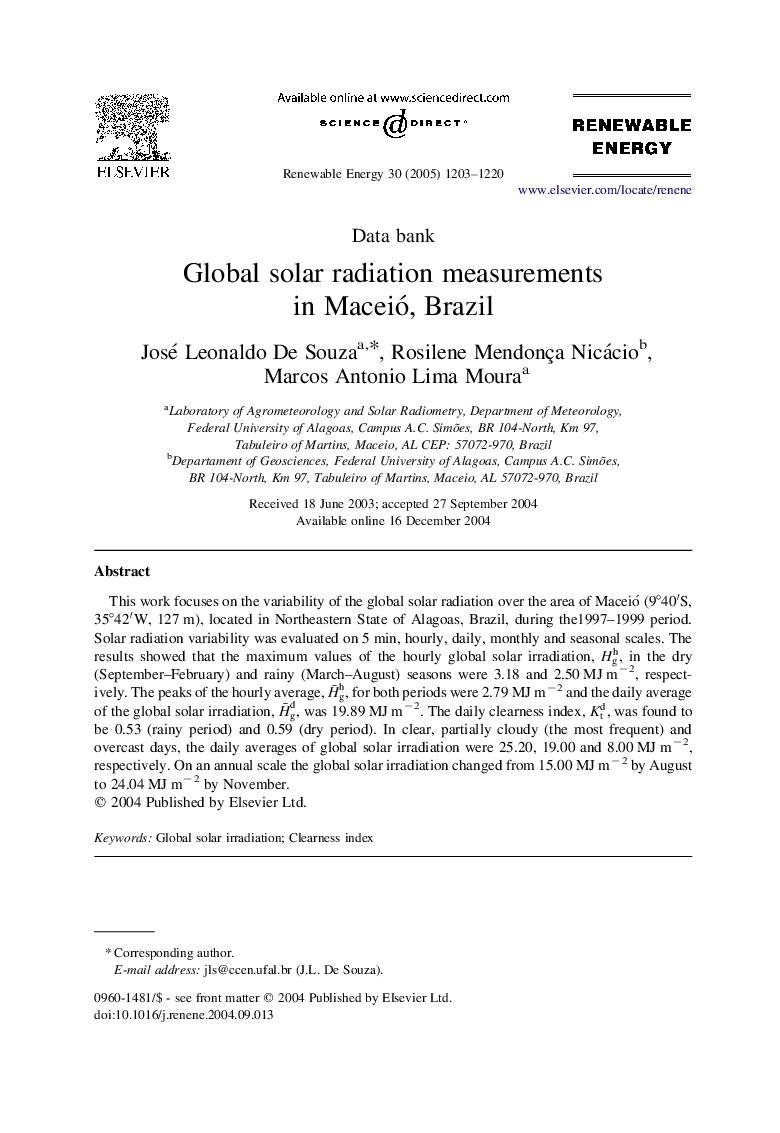| Article ID | Journal | Published Year | Pages | File Type |
|---|---|---|---|---|
| 10294333 | Renewable Energy | 2005 | 18 Pages |
Abstract
This work focuses on the variability of the global solar radiation over the area of Maceió (9°40â²S, 35°42â²W, 127 m), located in Northeastern State of Alagoas, Brazil, during the1997-1999 period. Solar radiation variability was evaluated on 5 min, hourly, daily, monthly and seasonal scales. The results showed that the maximum values of the hourly global solar irradiation, Hgh, in the dry (September-February) and rainy (March-August) seasons were 3.18 and 2.50 MJ mâ2, respectively. The peaks of the hourly average, H¯gh, for both periods were 2.79 MJ mâ2 and the daily average of the global solar irradiation, H¯gd, was 19.89 MJ mâ2. The daily clearness index, Ktd, was found to be 0.53 (rainy period) and 0.59 (dry period). In clear, partially cloudy (the most frequent) and overcast days, the daily averages of global solar irradiation were 25.20, 19.00 and 8.00 MJ mâ2, respectively. On an annual scale the global solar irradiation changed from 15.00 MJ mâ2 by August to 24.04 MJ mâ2 by November.
Related Topics
Physical Sciences and Engineering
Energy
Renewable Energy, Sustainability and the Environment
Authors
José Leonaldo De Souza, Rosilene Mendonça Nicácio, Marcos Antonio Lima Moura,
